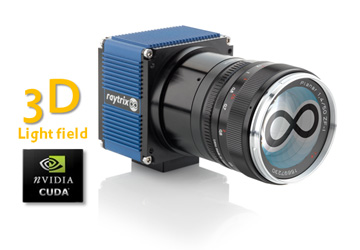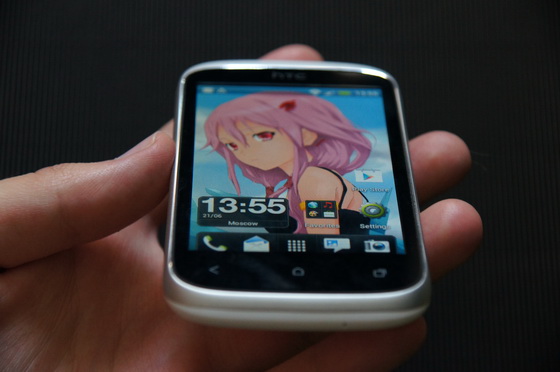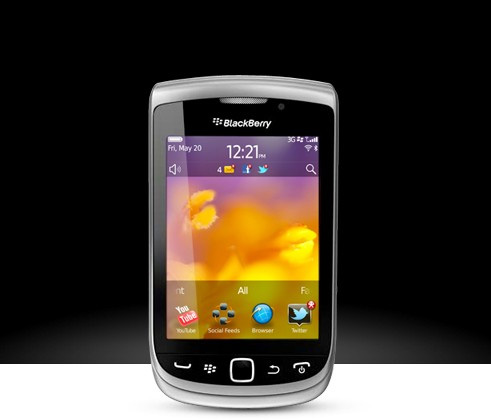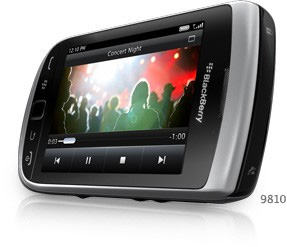Scope of supply:
Camera Lytro
The magnetic cover over the lens
Hand strap
Cloth for cleaning
A short memo about the device
USB-cableTechnology of Light Field Camera, and my expectations LytroOn a small company Lytro I learned long before the cameras of the same name, in those days it was still a small but promising start-up Refocus Imaging. In 2006 he organized a researcher at Stanford University, Ren Ng. He received his degree in the same year, when he organized his own company in which he became president. The camera is called Light Field Camera, and distinguished by the fact that is not allowed to direct the lens to the subject, AF was absent. The camera was filming the luminous flux, the direction of each ray of light and its power, which allowed further to focus the image on the computer. Any subject and the plan could be sharp enough to put the cursor on it. In conventional photography because the camera measures the light intensity, but not the direction. Thus, the usual photo and camera technology is two-dimensional, but in the Light Field cameras get four-dimensional array of data, which can then be converted into two-dimensional image. The transformation itself does not affect the raw data image, only the display of images in two-dimensional plane, you are making a sharp or that part of photography.
In Lytro even invented a name to refer to the information in this photograph - megarays (that is, it's not the point, and the number of rays - in the first chamber resolution of 11 megarays).Information about this technology began to appear widely since the end of 2005, thanks to the efforts of Ren Ng. Although in fairness I must say that it is not the inventor of this technology was invented in 1908 by Gabriel Lippmann (Gabriel Lippmann). The story of this man is very interesting, as its contribution to the photo is huge, you can read about, for example, right here.His proposed technique at that time has been applied only to create a stereoscopic image, and greeting cards, you probably played with as a child. This may be a calendar with a picture of iridescent or a postcard, which created the effect of volume. At the core are exactly the same ideas that I used Ren Ng in the development of his cell.
 Currently the company has several products, but prices are reported only on request, this is not the mass market. I
do not know how to exit Lytro impact on business Raytrix, but suffice
to say that these cameras are used inside the GPU Cuda from NVIDIA, that
initially does not imply a low cost, it really is a professional
solution.So
promise Lytro always looked inviting - an inexpensive camera with Light
Field, which is induced not have the sharpness, it is sufficient to
direct the camera at the subject and shoot. Science Fiction, which promised a huge number of new features and applications. In any case, it is this picture was drawn in the minds of most who read lengthy brochures Lytro. Yes,
a terrific investment in the company, which exceeded $ 50 million,
hinting that it's not Dummy, and facing technology that is able to blow
up the market.
Currently the company has several products, but prices are reported only on request, this is not the mass market. I
do not know how to exit Lytro impact on business Raytrix, but suffice
to say that these cameras are used inside the GPU Cuda from NVIDIA, that
initially does not imply a low cost, it really is a professional
solution.So
promise Lytro always looked inviting - an inexpensive camera with Light
Field, which is induced not have the sharpness, it is sufficient to
direct the camera at the subject and shoot. Science Fiction, which promised a huge number of new features and applications. In any case, it is this picture was drawn in the minds of most who read lengthy brochures Lytro. Yes,
a terrific investment in the company, which exceeded $ 50 million,
hinting that it's not Dummy, and facing technology that is able to blow
up the market.

My expectations for this product were very overpriced, I specifically confess to this, as perhaps disappointing impact on the text you are reading. I have long approached the description of the camera from different angles and trying to find a bright moments, but every time I come across is that all my efforts proved futile. Camera Lytro disappointed with every photograph made. But first - that it represents.Extracurricular Reading:
How to create Lytro - the story of the investor
Thesis Ren Ng, dedicated to the Light Field photos - it is interesting talks about the main problems of this area

Specifications LytroThe camera fits in the palm (112h41h41 mm, 214 grams) and is completely different from conventional cameras. At around the appearance of the impression they are looking at and trying to understand what you have in your hands. Therefore, for the image component of the company should be put Lytro firm "five", they managed to surprise, which in itself is a lot of the modern world.Housing in the bottom of the rubberized, at the top of a metal surface. The camera is available yet in three colors - red, blue and dark gray. The last two colors have internal memory of 8 GB (350 images), and the red camera - 16 GB (750 shots).All images are saved in a proprietary format lpf, to view them requires special software. Camera Resolution 11 megarays, but you can convert any image into an ordinary JPEG (1080h1080 points, that is, this is the maximum resolution the camera, not stated). In fact, despite the declarations of 11 megareev, the camera resolution is a modest 1.1 megapixel resolution. I think that in terms of marketing is done all right, because very few people will enjoy a lower resolution camera in 2012, when most phones, it is 5 or 8 megapixels.The quality of the optics of the paper looks great - the lens has a constant aperture f / 2, and the focal length from 43 to 340 mm (equivalent to 35 mm frame). On the magnitudes of ISO manufacturer does not say anything, but the range is from 125 to 3200. You just can not change the ISO, the camera picks it up yourself. Preferred values are ISO 800 and 200 and 400. Notice the other values in real life I could not. It is possible that this software flaws, but they look not very nice. In addition to all the electronic shutter so that any moving object such as a dog or a machine on the carpet, are out of focus, they are blurred. One of the characteristics which should be on top in this chamber, turned out to be phony.Another point, which darkens the lives of other members Lytro, a viewfinder, it is built in front of the lens, this touch screen with a diagonal of 1.46 inches and a minimum resolution. Seen in the viewfinder that something good is not worth a thought, even the photos look like a hint at something. It remains to guess at what you shot.Because the screen is touch-sensitive, it is possible to view photos (there is no need), and most importantly - to change modes. Their only two - the default is daily (Everyday). In this mode, the lens focal length 43-150 mm, you do not need to choose the object on which the primary focus has been. In the Creative 43-340 mm focal length, you can select an object on which you want to focus on. In this mode, the perfect close-derived. Optical zoom eightfold.The camera turns on almost instantly, it takes seconds. Unfortunately, the magnetic lens cap is not attached, so it is easy to lose. Another disadvantage is that the zoom slider is triggered accidentally almost always have to return it to its normal position (the upper end is marked notches on the rubber). The shutter button - immediately. At the bottom there is a power button, there is - microUSB connector for connecting the charger or cable. Built-in battery can do about 350-400 shots, while charging in the car takes about 1.5 hours on the computer - about 3.5-4 hours.Unfortunately, to transfer files to your computer needs Lytro Desktop, since the file format is only supported in this program. At the moment there is only a variant of the program for MacOS, Windows for its promise to release later.
When connected to Lytro Desktop files are copied to the computer, and then you can consider them to focus on any point. To use the file on your page, you need to insert a flash code (these were the high technology of the past), or give a link to the repository Lytro, where each user gets their page. For example, my photos can be found here.However, do not rush to click on the link and view photos, let me tell you about my impressions of the camera
Photograph on the Lytro - the missing day in Konstantinovo
Near Ryazan is quite an amazing place - a village Konstantinovo. This village - the birthplace of Esenina, and field testing the camera I decided to do it here. In order to understand how nature is good here, I will show you a hastily assembled panorama of the river (Canon 500D, but not Lytro, as one might think).During the day, like a madman, I photographed everything and everyone in this village on the Lytro. In the evening of the 400 photos are more or less sharp were only a dozen. Whether it's the only camera with me and I did not shoot at a regular SLR, I'd just lost his temper. Photos turned out the complete opposite of my expectations and advertising claims. Complete.
Camera Lytro
The magnetic cover over the lens
Hand strap
Cloth for cleaning
A short memo about the device
USB-cableTechnology of Light Field Camera, and my expectations LytroOn a small company Lytro I learned long before the cameras of the same name, in those days it was still a small but promising start-up Refocus Imaging. In 2006 he organized a researcher at Stanford University, Ren Ng. He received his degree in the same year, when he organized his own company in which he became president. The camera is called Light Field Camera, and distinguished by the fact that is not allowed to direct the lens to the subject, AF was absent. The camera was filming the luminous flux, the direction of each ray of light and its power, which allowed further to focus the image on the computer. Any subject and the plan could be sharp enough to put the cursor on it. In conventional photography because the camera measures the light intensity, but not the direction. Thus, the usual photo and camera technology is two-dimensional, but in the Light Field cameras get four-dimensional array of data, which can then be converted into two-dimensional image. The transformation itself does not affect the raw data image, only the display of images in two-dimensional plane, you are making a sharp or that part of photography.

In Lytro even invented a name to refer to the information in this photograph - megarays (that is, it's not the point, and the number of rays - in the first chamber resolution of 11 megarays).Information about this technology began to appear widely since the end of 2005, thanks to the efforts of Ren Ng. Although in fairness I must say that it is not the inventor of this technology was invented in 1908 by Gabriel Lippmann (Gabriel Lippmann). The story of this man is very interesting, as its contribution to the photo is huge, you can read about, for example, right here.His proposed technique at that time has been applied only to create a stereoscopic image, and greeting cards, you probably played with as a child. This may be a calendar with a picture of iridescent or a postcard, which created the effect of volume. At the core are exactly the same ideas that I used Ren Ng in the development of his cell.

Companies
that create Light Field Camera, now more than a dozen, among them there
are both research laboratories and commercial enterprises. All
these companies have in common, except Lytro, only that they are
oriented to the professional use of their devices, but their value is
measured in tens of thousands of dollars. Technology
is still in its infancy, and so expensive, what about the mass
application is not necessary, although experience Lytro, it would seem,
proves the opposite. For example, the German company Raytrix first began to produce commercial camera-based Light Field technology. But she was initially positioned such products as a professional. Indeed, one of the first chamber R11 was worth 30,000 dollars, had a resolution of 3 megapixels. Few ordinary mortals could afford such a toy, it primarily meant for research laboratories. Unfortunately,
to know the sales volume of these chambers is not possible, but put on
the fact that a few dozen pieces on the force.


My expectations for this product were very overpriced, I specifically confess to this, as perhaps disappointing impact on the text you are reading. I have long approached the description of the camera from different angles and trying to find a bright moments, but every time I come across is that all my efforts proved futile. Camera Lytro disappointed with every photograph made. But first - that it represents.Extracurricular Reading:
How to create Lytro - the story of the investor
Thesis Ren Ng, dedicated to the Light Field photos - it is interesting talks about the main problems of this area

Specifications LytroThe camera fits in the palm (112h41h41 mm, 214 grams) and is completely different from conventional cameras. At around the appearance of the impression they are looking at and trying to understand what you have in your hands. Therefore, for the image component of the company should be put Lytro firm "five", they managed to surprise, which in itself is a lot of the modern world.Housing in the bottom of the rubberized, at the top of a metal surface. The camera is available yet in three colors - red, blue and dark gray. The last two colors have internal memory of 8 GB (350 images), and the red camera - 16 GB (750 shots).All images are saved in a proprietary format lpf, to view them requires special software. Camera Resolution 11 megarays, but you can convert any image into an ordinary JPEG (1080h1080 points, that is, this is the maximum resolution the camera, not stated). In fact, despite the declarations of 11 megareev, the camera resolution is a modest 1.1 megapixel resolution. I think that in terms of marketing is done all right, because very few people will enjoy a lower resolution camera in 2012, when most phones, it is 5 or 8 megapixels.The quality of the optics of the paper looks great - the lens has a constant aperture f / 2, and the focal length from 43 to 340 mm (equivalent to 35 mm frame). On the magnitudes of ISO manufacturer does not say anything, but the range is from 125 to 3200. You just can not change the ISO, the camera picks it up yourself. Preferred values are ISO 800 and 200 and 400. Notice the other values in real life I could not. It is possible that this software flaws, but they look not very nice. In addition to all the electronic shutter so that any moving object such as a dog or a machine on the carpet, are out of focus, they are blurred. One of the characteristics which should be on top in this chamber, turned out to be phony.Another point, which darkens the lives of other members Lytro, a viewfinder, it is built in front of the lens, this touch screen with a diagonal of 1.46 inches and a minimum resolution. Seen in the viewfinder that something good is not worth a thought, even the photos look like a hint at something. It remains to guess at what you shot.Because the screen is touch-sensitive, it is possible to view photos (there is no need), and most importantly - to change modes. Their only two - the default is daily (Everyday). In this mode, the lens focal length 43-150 mm, you do not need to choose the object on which the primary focus has been. In the Creative 43-340 mm focal length, you can select an object on which you want to focus on. In this mode, the perfect close-derived. Optical zoom eightfold.The camera turns on almost instantly, it takes seconds. Unfortunately, the magnetic lens cap is not attached, so it is easy to lose. Another disadvantage is that the zoom slider is triggered accidentally almost always have to return it to its normal position (the upper end is marked notches on the rubber). The shutter button - immediately. At the bottom there is a power button, there is - microUSB connector for connecting the charger or cable. Built-in battery can do about 350-400 shots, while charging in the car takes about 1.5 hours on the computer - about 3.5-4 hours.Unfortunately, to transfer files to your computer needs Lytro Desktop, since the file format is only supported in this program. At the moment there is only a variant of the program for MacOS, Windows for its promise to release later.
When connected to Lytro Desktop files are copied to the computer, and then you can consider them to focus on any point. To use the file on your page, you need to insert a flash code (these were the high technology of the past), or give a link to the repository Lytro, where each user gets their page. For example, my photos can be found here.However, do not rush to click on the link and view photos, let me tell you about my impressions of the camera
Photograph on the Lytro - the missing day in Konstantinovo
Near Ryazan is quite an amazing place - a village Konstantinovo. This village - the birthplace of Esenina, and field testing the camera I decided to do it here. In order to understand how nature is good here, I will show you a hastily assembled panorama of the river (Canon 500D, but not Lytro, as one might think).During the day, like a madman, I photographed everything and everyone in this village on the Lytro. In the evening of the 400 photos are more or less sharp were only a dozen. Whether it's the only camera with me and I did not shoot at a regular SLR, I'd just lost his temper. Photos turned out the complete opposite of my expectations and advertising claims. Complete.






